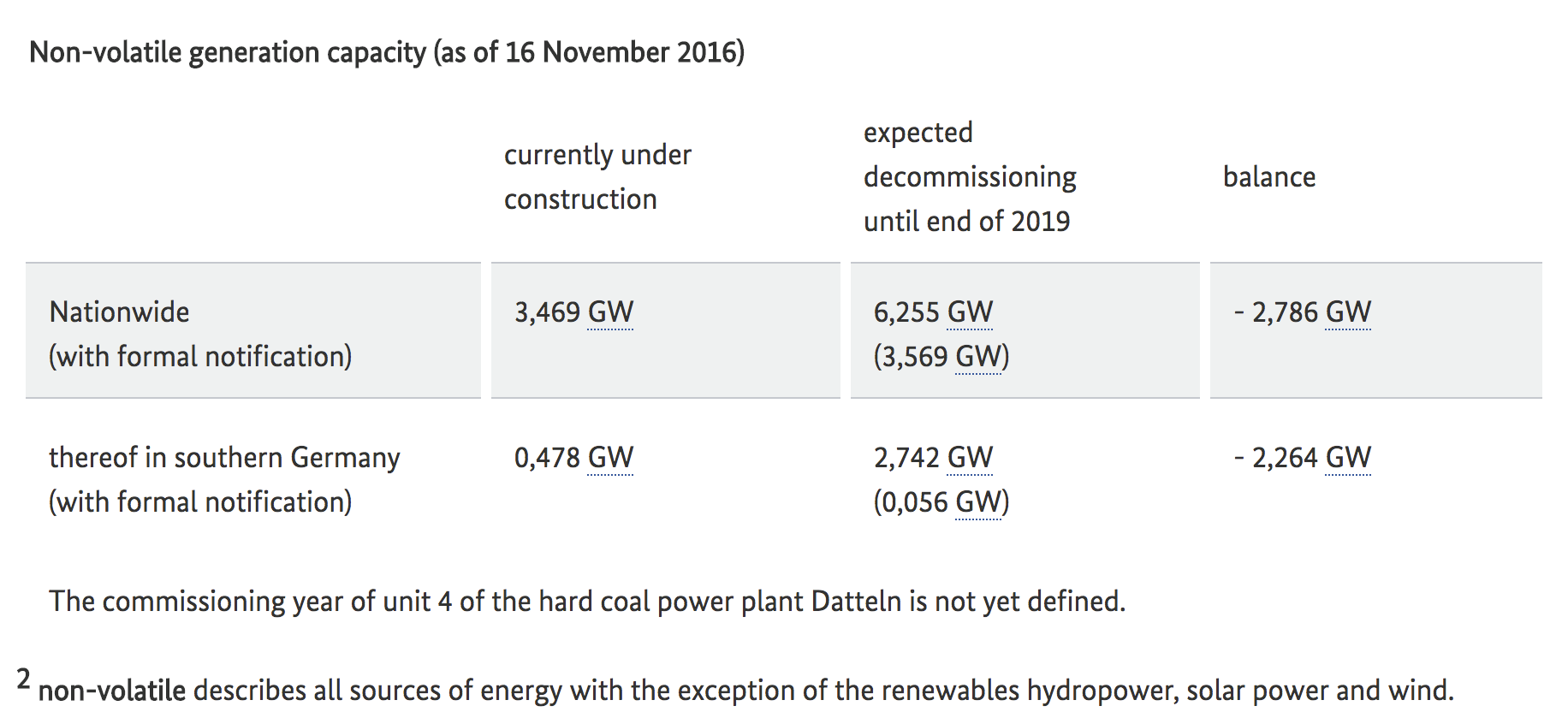The plant could have been abandoned. It may still be. But Uniper, formerly Eon, now says it will put the nearly completed Datteln 4 into operation after getting a final permit. The market for its electricity doesn’t look good, Craig Morris says.

The future doesn’t look bright for Datteln (Photo by Arnold Paul, edited, CC BY-SA 2.5)
Last October, I wrote about the saga at Datteln 4, the 80% finished one-gigawatt hard coal plant that should have gone into operation in 2011 but was built five kilometers from the site for which a permit had been granted. Climate activists exploited that violation in court, but the company, Uniper, managed to finally get a permit for the actual site on January 19. Now, Uniper says it will complete the plant and put it into operation. The project has basically been on ice since mid-2009.
With a billion euros already sunk in the plant, Uniper’s decision to proceed is understandable. On the other hand, the outlook for coal power is bleak in Germany. If Datteln 4 goes into operation in, say, 2018, it may only have 20 years to stay in operation.
That’s because the coal sector is currently being sidelined on the power market. Coal power decreased in 2016 by just under one percent. “If this reduction were to continue at the level of 2016, the last coal plant would go offline around the beginning of 2038,” Agora’s Energiewende’s Patrick Graichen explains (press release in German). Economics daily Handelsblatt read the tea leaves from last year the same way; in an article entitled “The creeping end of coal” (in German), the paper states that “Germany is stepping away from coal even without a plan to do so.” Political pressure remains for a coal phaseout, but market forces may be moving faster. For instance, the German Green Party is calling for a coal phaseout within twenty years, only a year before the market would close the last coal plant in Agora’s analysis.
The list of power plants that utilities wish to close permanently (PDF in German) is now seven pages long and covers some nine gigawatts, just under a tenth of installed dispatchable capacity (referred to in the BDEW screenshot below as “non-volatile” generation capacity). Utilities have to ask Germany’s Network Agency for permission to close facilities; the Agency first reviews whether those plants are needed for grid support. If so, they are eligible for special compensation, but the amount does not generally suffice for new plants (see this press release from Eon on plans to close two gas turbines in 2015).
In combination with the remaining eight nuclear reactors to be shut down by 2022, the net volume of closures (minus new plants, none of which are coal-fired aside from Datteln IV) shown below means that wholesale power prices could remain stable until the mid-20s. But within Datteln IV’s first decade of operation, it is likely to face wholesale prices low enough to make operation unprofitable – and then have to close after the second decade.

Source: German Network Agency
BUND (Germany’s Friends of the Earth) says it will continue its attempt to block completion of the plant, whose efficiency is expected to come in at up to 60 percent with waste heat used in district heat networks. In addition, the plant can convert nearly half of its electricity into the 16 Hz needed to power German trains (the grid otherwise runs at 50 Hz). In December, the European Commission approved of a cogeneneration bonus for four fossil-fired facilities (including coal) in Germany (report in German). Those two options may be additional reasons why Uniper believes the unlikely: that Datteln IV will, against all odds, turn out to be a good investment.
According to the BDEW’s list of planned projects (PDF in German), two other projects are at least still on the drawing board, though construction has not started and no final decision has been made. One is Dow Chemicals’ plant, where hard coal would be cofired with woodchips and hydrogen; the other, RWE’s lignite-fired BoAplus Niederaußem, where a new 1,100 MW unit would replace four older 300 MW units (press release in German).
Craig Morris (@PPchef) is the lead author of Global Energy Transition. He is co-author of Energy Democracy, the first history of Germany’s Energiewende, and is currently Senior Fellow at the IASS.
Don’t feel so bad sbout it, Japan wants to build 45 new coal plants. This is the inevitable consequence of anti- nuclear scaremongering and the incessant instance that radiation, even in the tiniest doses is a health threat uncomparable to anything else.
As a consequence of 40 years worth of lying by the coal apologists of the anti-nuclear movement, the coral reefs are now dying globally. What else are you willing to sacrifice on the altar of your stupid anti-nuclear ideology?
[…] Germany to complete yet another coal plant By Craig Morris, Energy Transition, 1 February 2017 Last October, I wrote about the saga at Datteln 4, the 80% finished one-gigawatt hard coal plant that should have gone into operation in 2011 but was built five kilometers from the site for which a permit had been granted. Climate activists exploited that violation in court, but the company, Uniper, managed to finally get a permit for the actual site on January 19. Now, Uniper says it will complete the plant and put it into operation. The project has basically been on ice since mid-2009. With a billion euros already sunk in the plant, Uniper’s decision to proceed is understandable. On the other hand, the outlook for coal power is bleak in Germany. If Datteln 4 goes into operation in, say, 2018, it may only have 20 years to stay in operation. […]
[…] have no nuclear, with the remaining eight reactors having closed. No coal is in the pipeline with one possible exception. Gas turbines will start setting spot prices more, so expect six cents to be the norm. […]
[…] the last decade. Also, it appears that if German coal-fired plants ever expire, it will result from economics and not […]
[…] They got rid of their nuclear.” Germany did not get rid of its coal plants. It builds new ones with higher efficiencies. Germany is phasing out nuclear energy. It will not build new nuclear […]
[…] Hanno spento il nucleare.” Ma la Germania non ha chiuso le miniere, ne sta costruendo di nuove e con sistemi più efficienti. La Germania sta uscendo gradualmente dal nucleare. Non costruirà […]
We don’t think that coal or any carbon will disappear from power generation as we have a proven technology that uses any carbon, including wastes, via a reactor taken to very high pressures and temperatures, and generates power, potable water and managed gases so avoiding all GHG emissions. Overall operational efficiency is 80% plus, and a 5 MWh unit will be placed in a mobile 12m container making it totally independent, providing decentralised 24/7 power. We hope we are about to start fabrication of these smaller 5 MWh units.
If you look at our website you will see that it is possible to use any carbon, produce power, potable water and managed gasses such that there are no GHG emissions. But to do so you have to use a USC reactor which we are about to build placing 5 MWh unit in a 12m container giving decentralised 24/7 power using carbon waste. It’s a proven technology following 20 years of research.